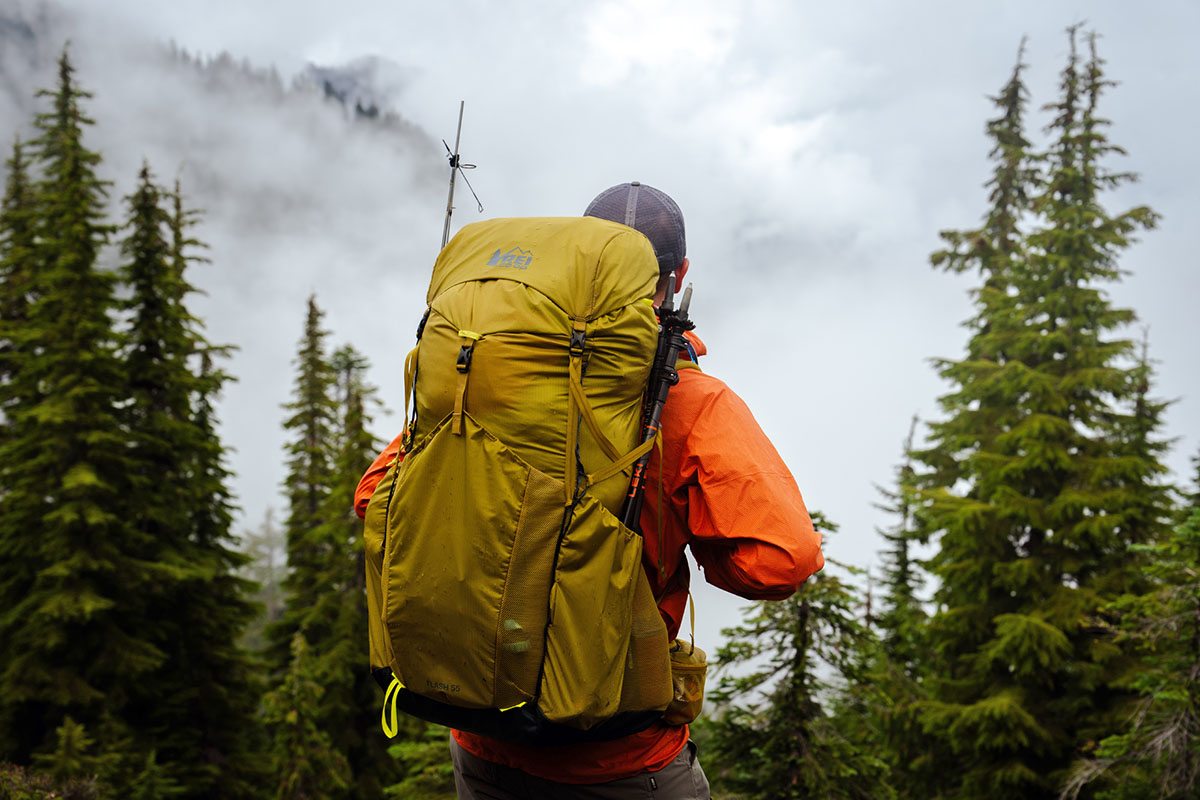
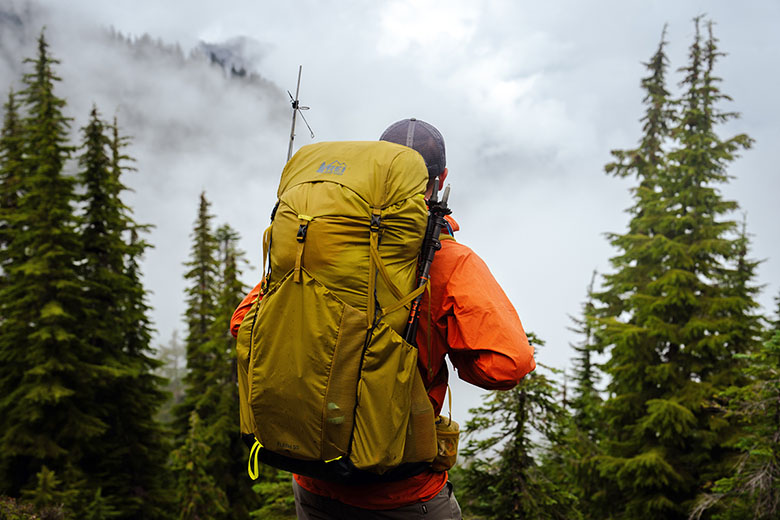
Price: $199
Weight: 2 lb. 13 oz. (men’s medium)
Fabric: Robic nylon (100D & 210D)
Capacity: 55L
What we like: Lightweight, carries a moderate load comfortably, and practical storage at a standout price.
What we don’t: Noisy shoulder straps; thin pack body requires some care around sharp rock.
See the Men's REI Co-op Flash 55 See the Women's REI Co-op Flash 55
REI Co-op entered the world of ultralight backpacking in a big way with the release of their Flash 55 pack. The combination of price, ample storage, and low weight made it a quick favorite, and the second generation (released in 2023) refined the design with an adjustable torso length. We tested the latest Flash 55 on a multi-day trek through Washington’s Alpine Lakes Wilderness and are happy to report that it remains impressively well balanced. We had a few nitpicks—including noisy shoulder straps and thin fabrics—but the Flash carries a moderate load comfortably and is a great value for what you get. Below are my thoughts on the Flash 55. To see how it stacks up to the competition, check out our articles on the best backpacking backpacks and best ultralight backpacks.
Comfort was a hallmark of the original Flash, and the co-op’s latest Flash 55 remains an excellent option for moderate loads. Hauling a few extras for our gear-testing trip, I was right up against the pack's 30-pound max limit most of the time but found the suspension and padding up to the task. It was very easy to get a good fit with the adjustable torso (more on this in “Fit and Sizing” below), and the medium-thickness padding was sufficient for avoiding pressure points. Additionally, the Flash felt evenly balanced and sat snug against my back, which inspired confidence when crossing tricky terrain like talus slopes and boulder fields. And the full-perimeter metal frame—with an additional brace running horizontally through the middle—gives it a stout feel and transfers weight nicely to the hips. All told, it’s the kind of design that should line up really well for a lot of users, from weekend adventurers to ultralight backpackers and thru-hikers.
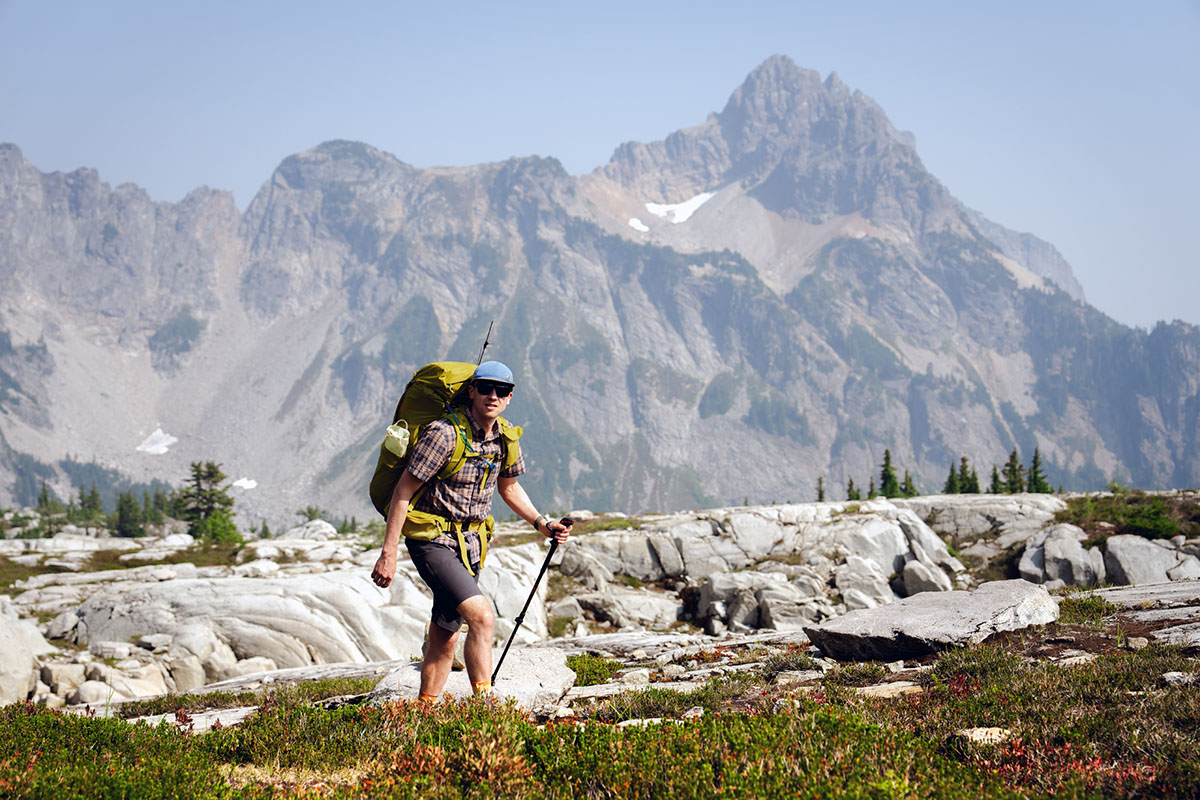
Overall, I found the Flash 55 checks nearly all the boxes comfort-wise, but there were a couple annoyances worth pointing out. First and most notably, the shoulder straps were surprisingly noisy. It seems to me that it’s an issue with the foam itself, which gives off a sandpaper rubbing-like sound when compressed. The net effect is that you hear the noise right below your ears with each step. On our backpacking trip, it faded into the background and only bothered me if I really fixated on it—and to be clear, plenty of packs that I’ve tested have developed squeaks and extra sounds over time—but it’s certainly worth calling out.
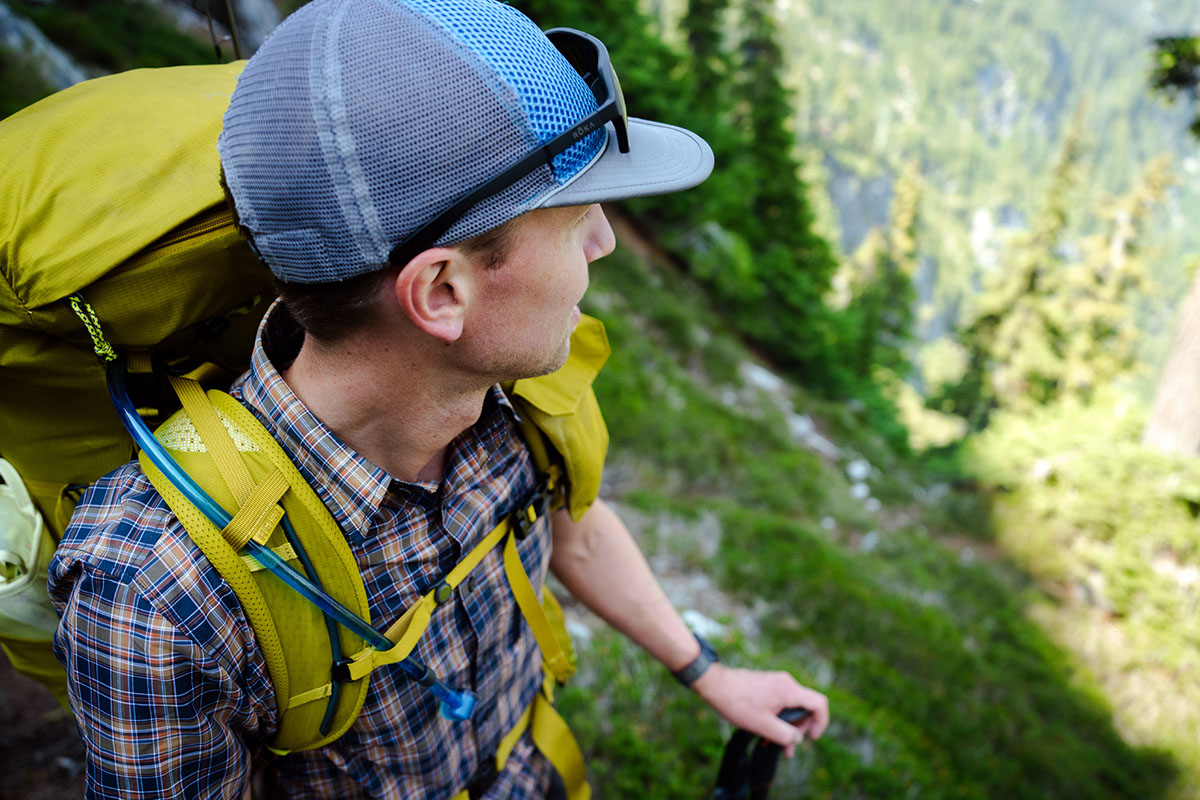
My second complaint is that the backpanel protrudes at the shoulders—a result of the new adjustable torso—which adds a little extra pressure in this area. Again, it’s something I adapted to just fine (and I happily donned the pack each morning), but it doesn’t sit as flush against the shoulder blades as other backpacks I’ve tried. The good news with both of the aforementioned issues is that you’ll quickly know if they’re dealbreakers for you. If not, the Flash 55 is the kind of do-everything pack that can capably handle seriously long days on the trail.
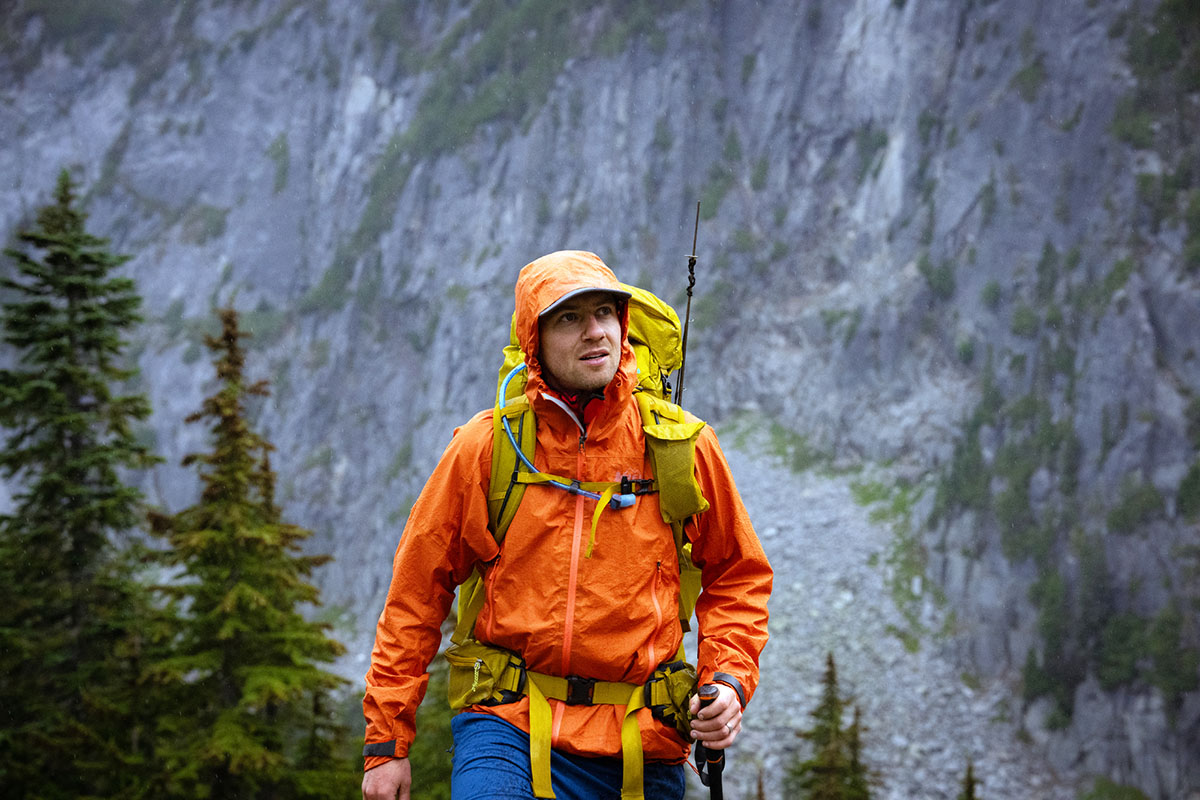
Weighing less than 3 pounds in the backpacking market puts you into the ultralight category, and my medium-frame Flash 55 comes in at a suitably low 2 pounds 13 ounces. Of note: That includes all the Packmod accessories (more on these below), and removing the shoulder strap pocket, extra set of compression straps, and top lid trims away 4 ounces (you can technically remove the hipbelt pockets, too, but I find those way too valuable to leave behind). For comparison, this puts the Flash 55 right in line with popular options like the Osprey Exos 58 (2 lb. 13.4 oz.), Gregory Focal 58 (2 lb. 9.6 oz.), and Granite Gear Crown3 60 (2 lb. 9.3 oz.). You can save even more weight with a streamlined and premium design like Hyperlite Mountain Gear’s Southwest 55 (1 lb. 15.7 oz.), but price jumps substantially to $379. All told, we think the Flash hits a real sweet spot in weight, price, and all-around performance.
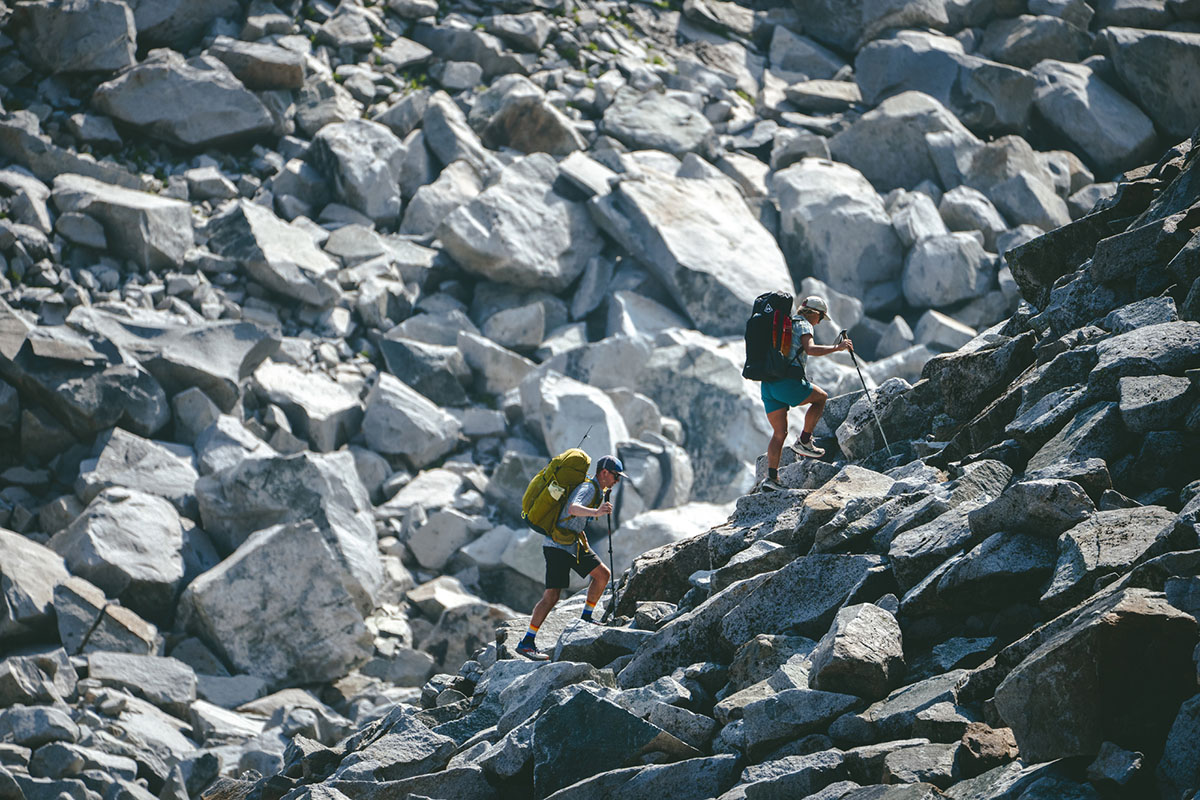
In terms of organization, the REI Flash 55 is about as fully featured as it gets in the UL space. The pack features a sizable top lid with a zippered compartment, a roomy partial-mesh pocket along the front that’s great for wet gear or items you want close at hand, and a cavernous, bucket-style main compartment. In addition, we love the dual side pocket layout, which features both a tall pocket that’s made with sturdy ripstop nylon for protecting items like trekking poles or a tent, as well as a mesh water bottle pocket that’s tilted at an angle to make retrieval quick and easy without having to remove your pack. Finally, if you prefer to use a hydration bladder, the Flash has two openings that allow you to drape the hose over either the right or left shoulder.
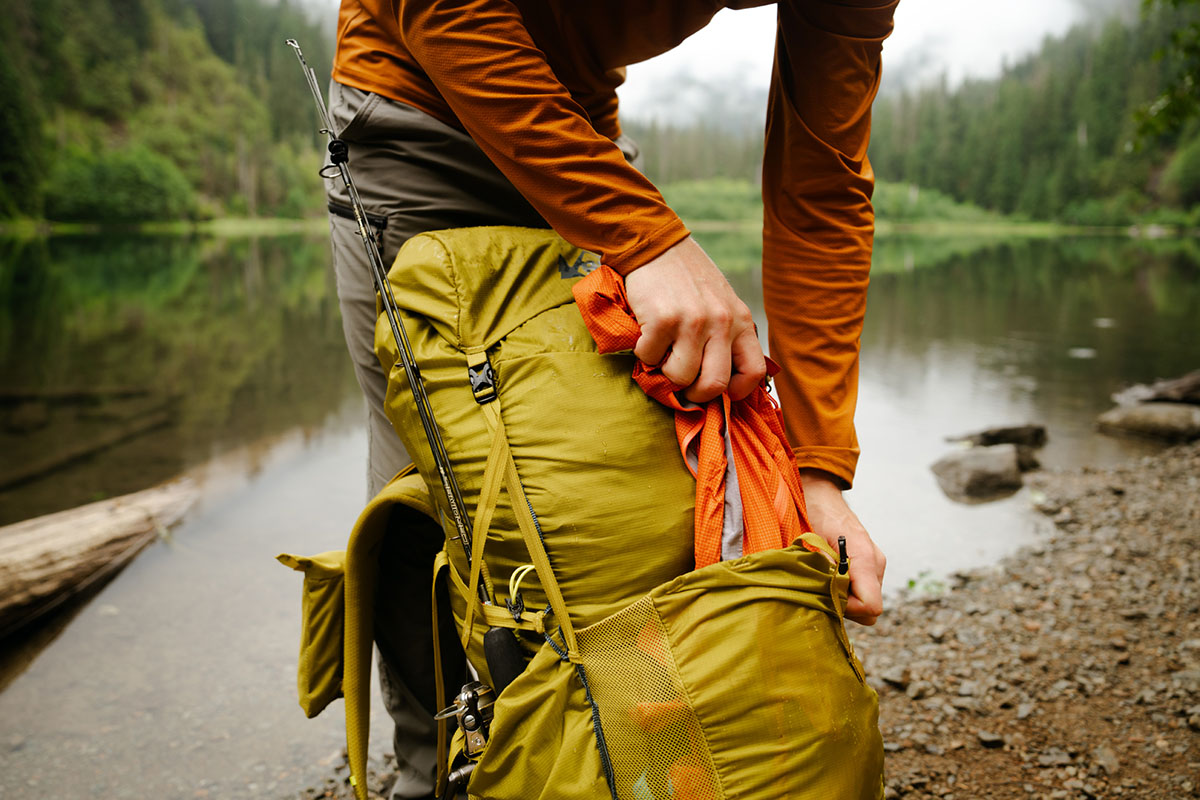
As far as the Packmod system goes, REI includes removable pockets in two key places: Two hipbelt pockets (one mesh and one ripstop nylon) are the perfect size for carrying bars, lip balm, sunscreen, and other small necessities, while a single shoulder strap pocket easily stows a smartphone. This latter pocket seemed a bit unnecessary to me—I found it more annoying than useful, and the hipbelt pockets are also phone-friendly—but some may appreciate the option to store electronics (like a satellite messenger) higher up. And if you’d like to add additional storage, REI offers a coated and seam-taped Packmod Rainshield Pocket ($20) and standard Mesh Pocket ($15).
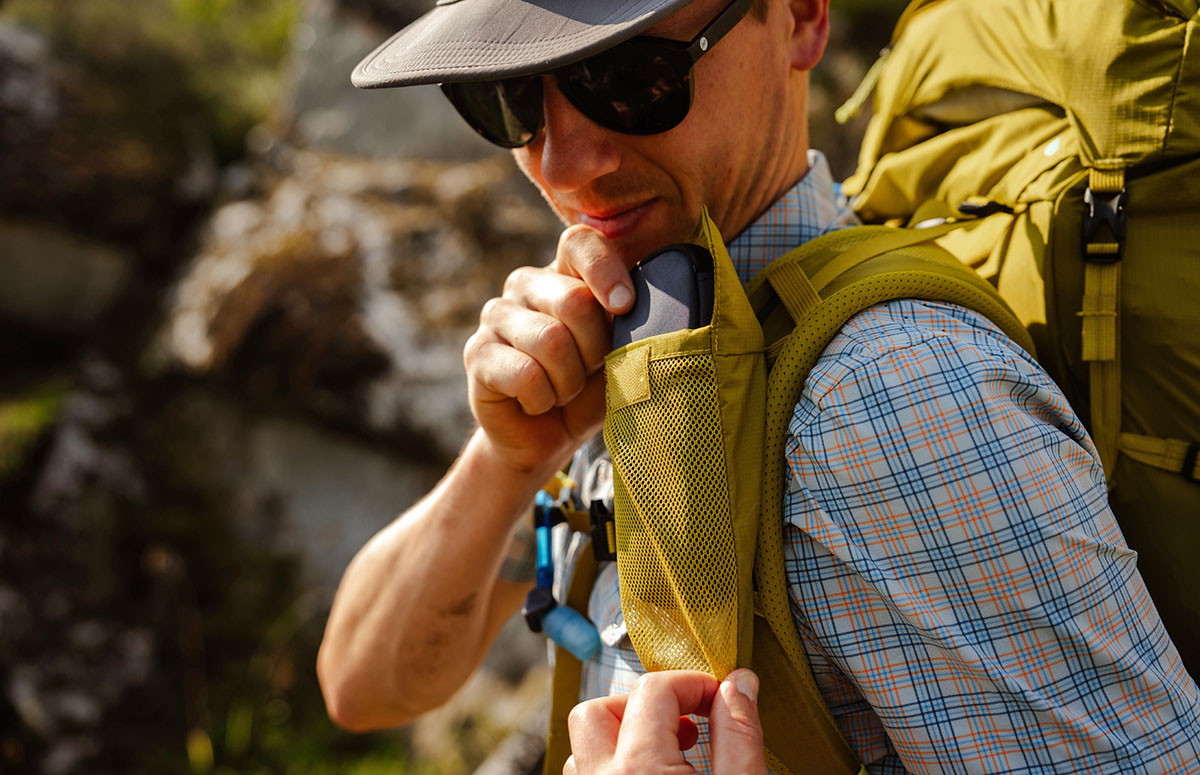
I’m a sucker for roll-top closures due to their ability to compress the pack down to better fit the size of your load. The Flash’s collar, in particular, extends quite far, allowing plenty of space for bulky gear, and can easily be compressed to make the pack more compact. If you’re using the Flash's top lid, simply roll and buckle the roll-top, then adjust and tighten the lid using two buckles along the front mesh pocket. If you choose to forego the lid, you can secure the roll-top in the same fashion—the buckles are interchangeable on the pack, so there are many options for configuration.
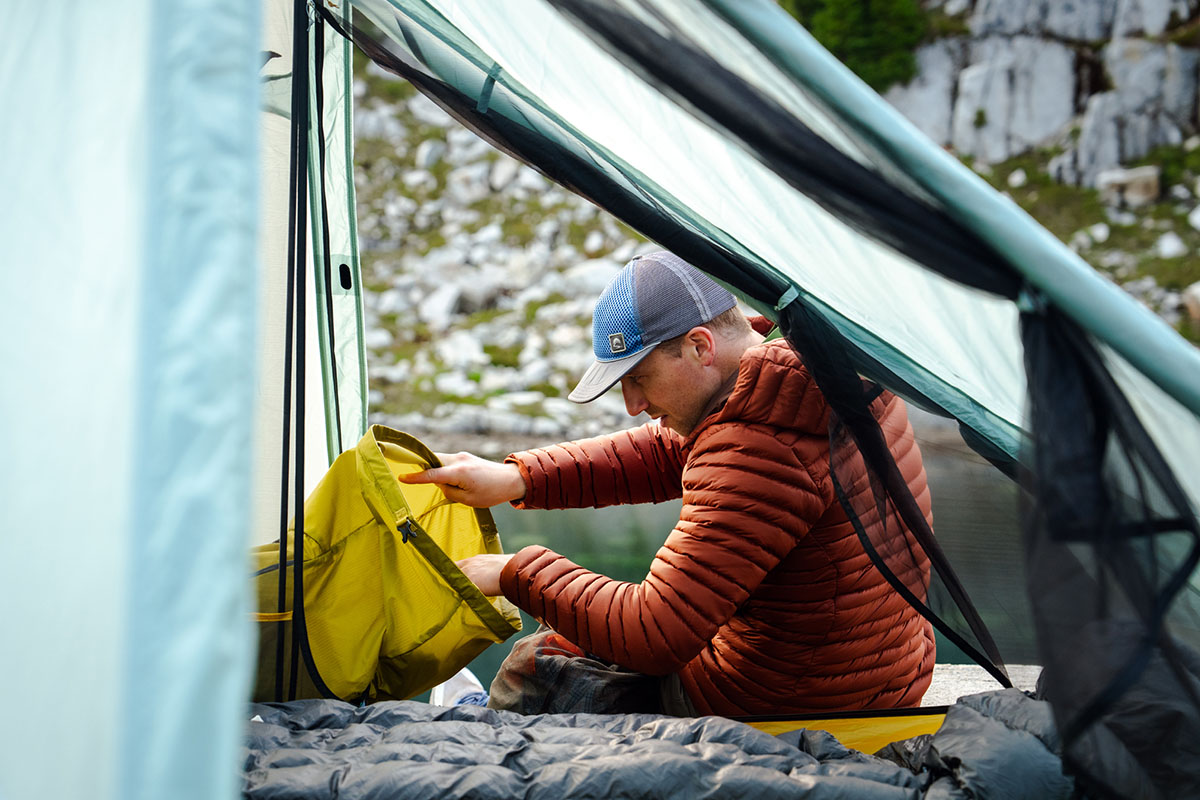
In addition to the multiple closure options, the REI Flash 55 also features four compression straps for securing extra gear. Depending on what you’re carrying, the straps can be moved up or down along daisy chains at the sides of the pack or removed entirely to cut weight. Further, REI included an ice axe attachment loop at the bottom of the pack and a bungee cord along the top to secure it. All things considered, both the attachment options and top closure system are well constructed, easy to use, and highly customizable.
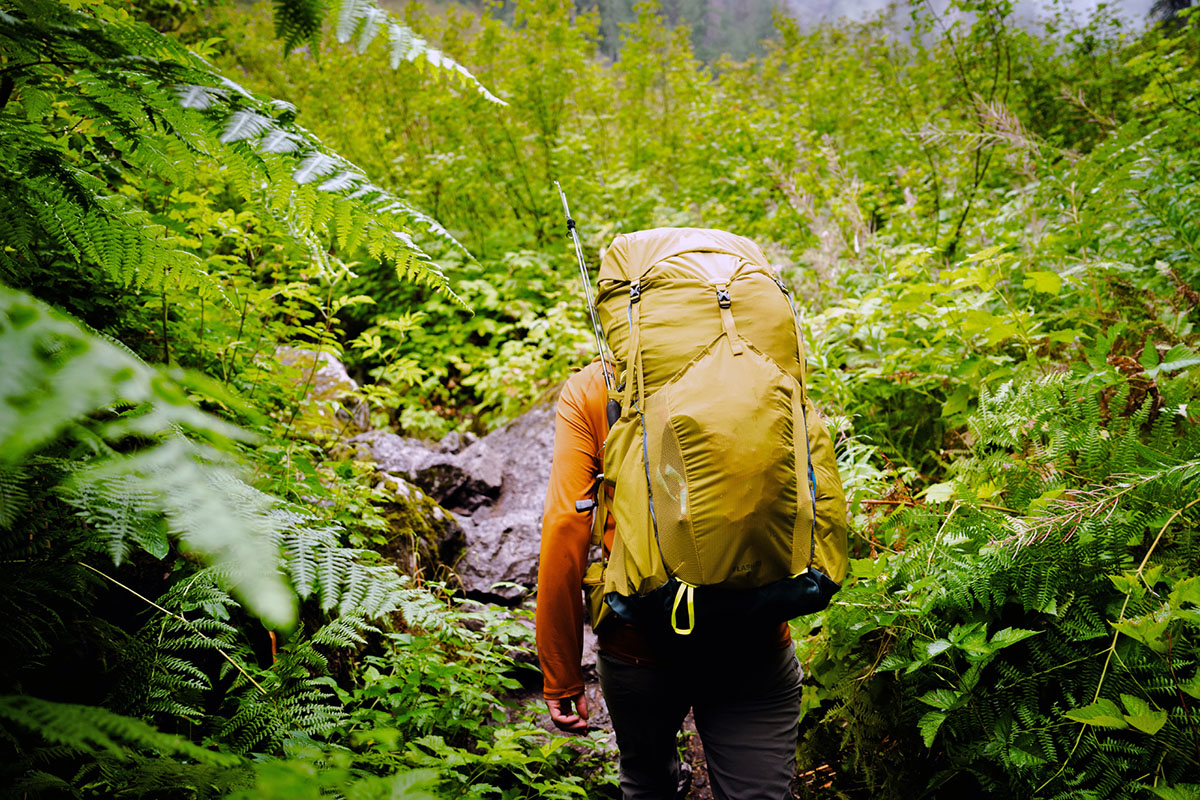
Durability is a typical compromise in cutting weight, and the Flash 55 isn’t totally immune. The pack body features relatively thin, 100-denier (D) Robic nylon ripstop, while the base gets beefed-up 210-denier Robic nylon to help combat against sharp rocks when setting the pack down. Additionally, REI upgraded the durability of the mesh, which is a bit less stretchy than before but noticeably thicker. They also swapped in ripstop fabric along the middle of the large front pocket (the old design was all mesh), which paid dividends on our trip while bushwhacking and squeezing through abrasive granite. Overall, I think REI did a commendable job balancing weight and durability. You’ll want to be mindful of the 100D nylon—it’s relatively easy to inflict small slices around rock—but they thoughtfully reinforced the pack and didn’t compromise quality in areas like the buckles or foam padding.
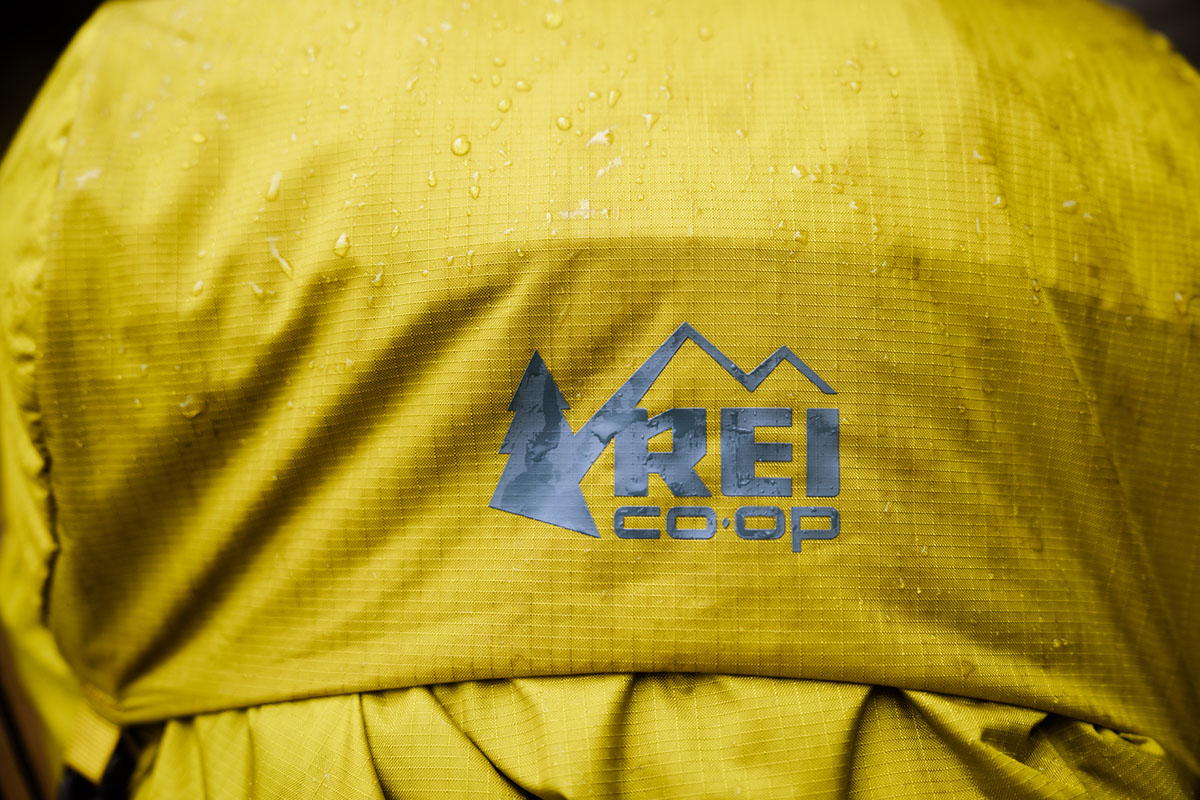
The REI Flash 55’s backpanel and hipbelt allow for a good amount of airflow thanks to generous use of mesh and cutouts in the foam. The design can’t match the airy feeling that you get with a trampoline-style mesh backpanel—found on Osprey’s Exos or Zpacks’ Arc Haul Ultra—but I didn’t have any real issues even in warm and sunny conditions. My only notable complaint is that the shoulder straps didn’t ventilate nearly as well as the backpanel and hipbelt, but the added cushioning was worth that trade-off, in my opinion.
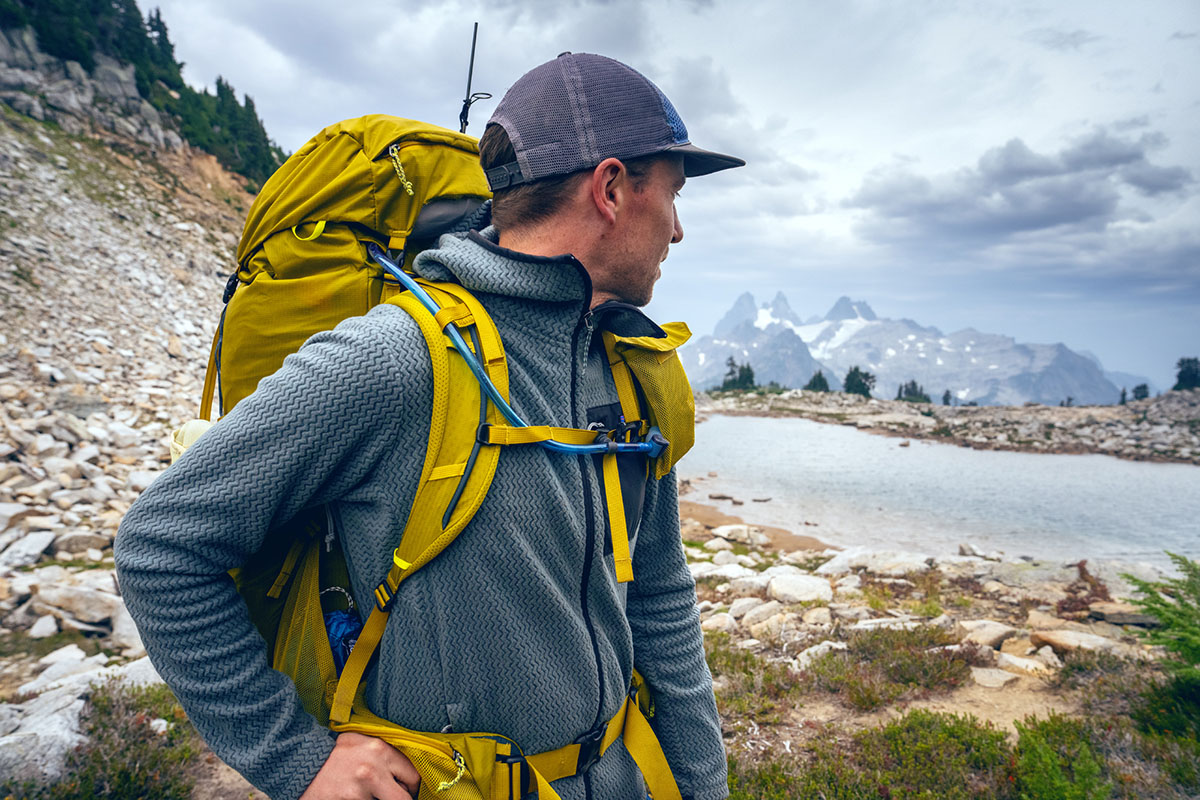
As I touched on above, an important upgrade with the latest REI Flash is its adjustable torso. The men’s pack is now offered in three core sizes for men, and I opted for a medium with my 18-inch torso (the medium pack’s range is 18-20 in.). Utilizing the hook-and-loop adjustment at the back, I set the shoulder straps to my torso length and was immediately happy with the fit. You don’t get the same level of adjustability with the hipbelt, but I was able to get it snug without issue. Of note: In addition to the three men’s sizes (S, M, and L), REI offers a unique sizing combination—a large torso and small hipbelt—plus compatibility with their Packmod hipbelt extender ($15), which is designed to fit sizes from 3X to 6X.
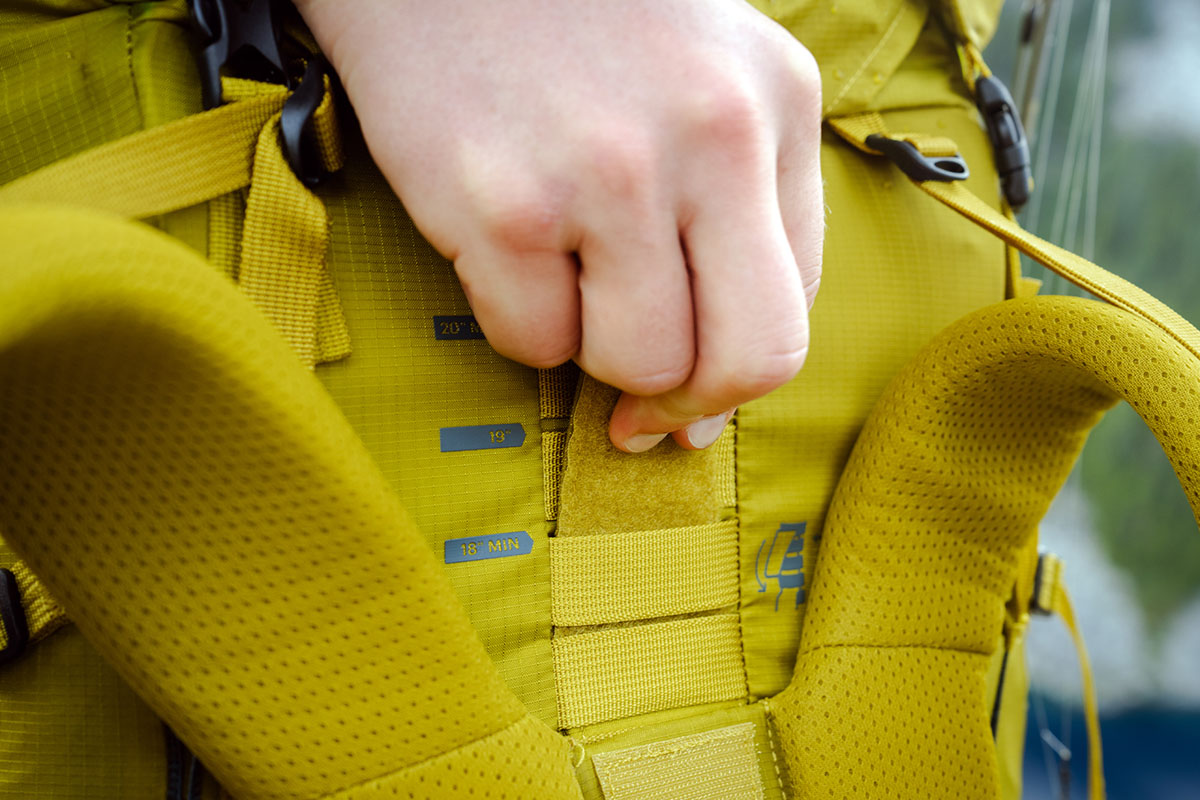
REI is known for their focus on sustainability, and the Flash 55 is another intentionally built design from the co-op. In addition to being made with recycled nylon, the pack utilizes bluesign-approved materials that meet strict environmental and health standards and have been deemed safe for workers, consumers, and the environment. REI is also Climate Neutral Certified, indicating they’ve effectively monitored, reduced, and ultimately offset all carbon emissions. Taken together, it’s a laudable effort from the brand and a nice reflection of where the industry is headed.

We tested the men’s Flash 55 for this review, and REI makes an almost identical women’s version for the same price. The only discernible differences between the two relate to fit, including smaller torso length and waist/hip measurements. The women’s pack also uses a different color than the men’s variation along the base in the Desert Moss colorway (the Jasper Green versions are the same) and checks in an ounce lighter. Otherwise, the two designs boast an identical construction and feature set.
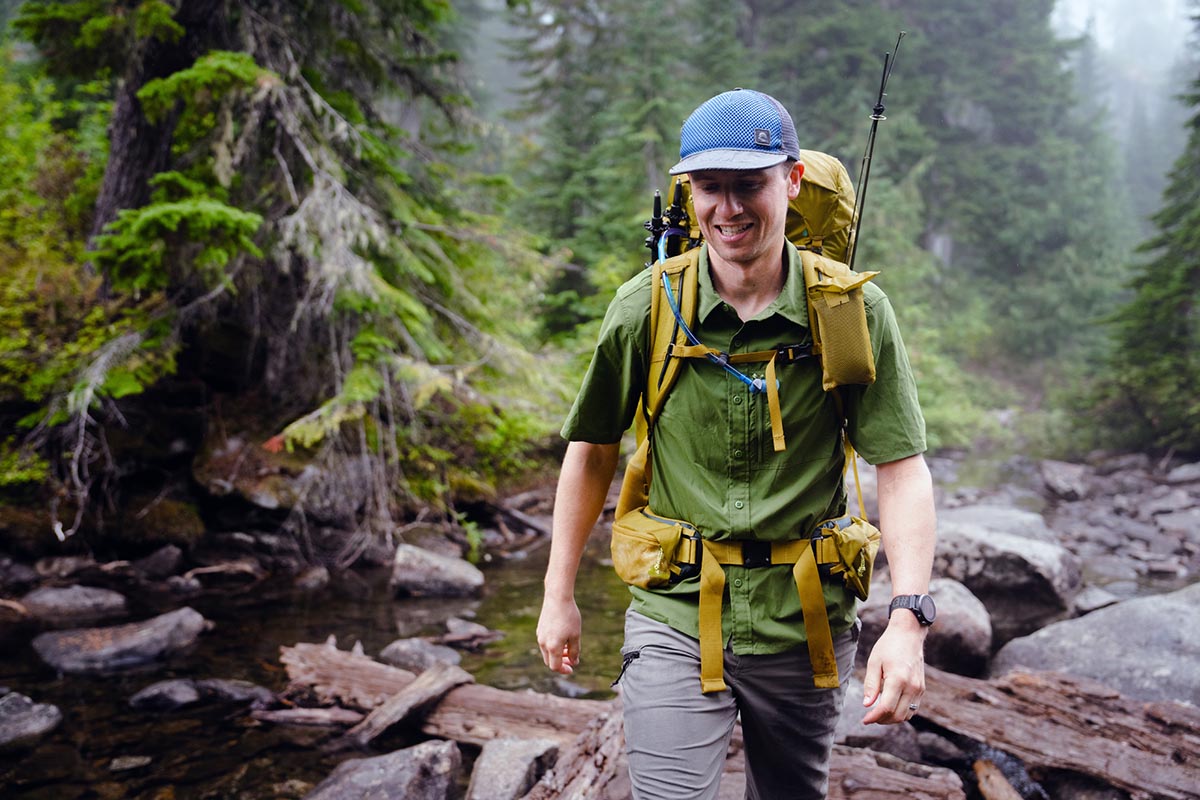
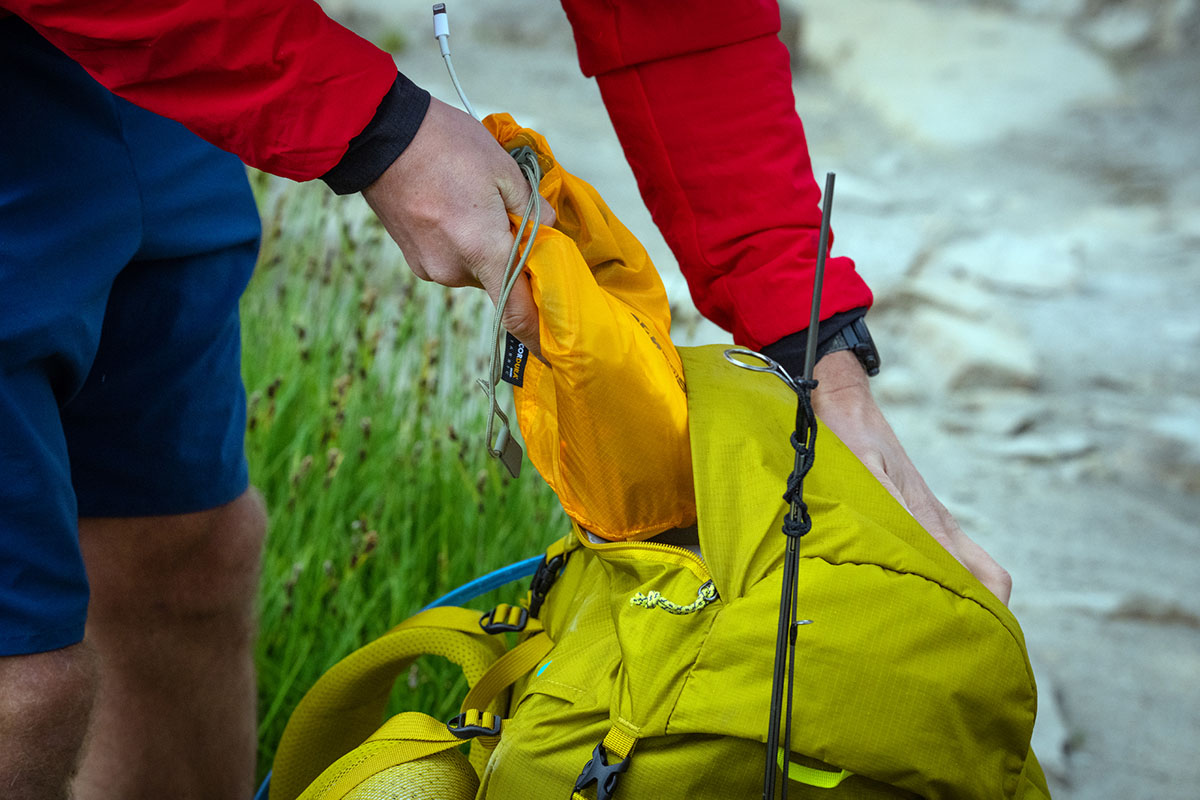
| Pack | Price | Weight | Fabric | Capacities | Load Limit |
|---|---|---|---|---|---|
| REI Co-op Flash 55 | $199 | 2 lb. 13 oz. | Robic nylon (100D & 210D) | 55L | 30 lb. |
| Osprey Exos 58 | $260 | 2 lb. 13.4 oz. | Nylon (100D & 400D) | 38, 48, 58L | 35 lb. |
| Granite Gear Crown3 60 | $240 | 2 lb. 9.3 oz. | Robic nylon (100D & 210D) | 60L | 35 lb. |
| Hyperlite Southwest 55 | $379 | 1 lb. 15.7 oz. | Dyneema (50D & 150D) | 40, 55, 70L | 40 lb. |
| REI Co-op Trailmade 60 | $179 | 3 lb. 6 oz. | Nylon | 60L | Unavail. |
The Flash 55 put REI solidly on the ultralight map, combining good carrying comfort and practical storage at a competitively low weight. In this category, another popular and longstanding design is Osprey’s Exos 58. Like the Flash, the Osprey hits a great balance of weight, carrying comfort, and build quality. Both are similarly durable, featuring 100D nylon on the pack body, while the Osprey’s suspended-mesh backpanel gives it an airier feeling and slightly better ventilation. Additionally, the Exos has a slightly higher load capacity (Osprey puts it at 35 lb. vs. the REI’s 30 lb., which we found to be accurate). On the other hand, the REI is cheaper by $61 and has a small leg up in organization with its functional dual side pockets. It’s a close call between the two, but the Osprey’s upgrades in refinement—the noisy foam on the REI’s shoulder straps is a notable downside—give it the slight edge for us.
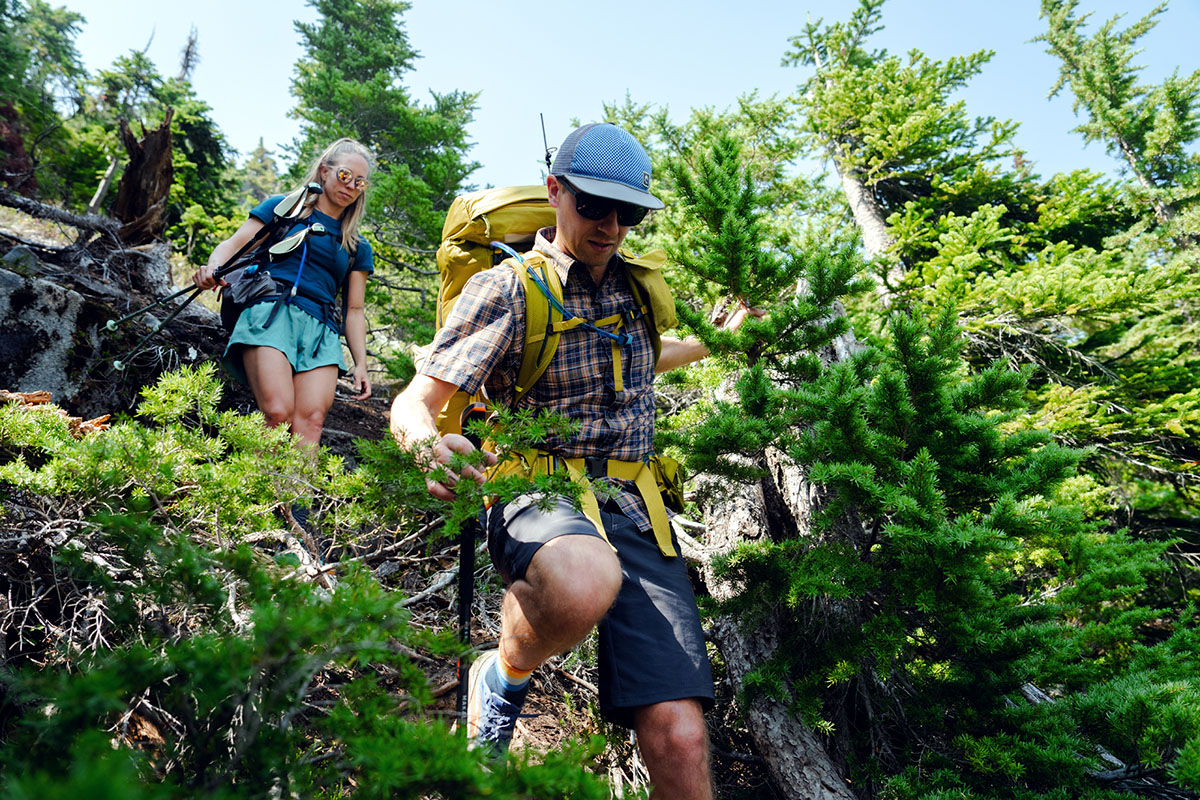
A second ultralight pack to consider is Granite Gear’s Crown3 60, which previously was one of our favorite budget packs (the Crown2 had an MSRP of $200, while the new model jumped to $240). Stacked up against the $199 REI, the Crown3 checks in at a similar weight and offers a comparable layout, including large pockets, the option to strip away features to save weight, and a roll-top closure. We also love the Crown3’s adjustable hipbelt, which can be easily tailored to your waist. That said, we found that the pack didn’t carry a load nearly as comfortably, particularly over technical terrain where it felt squirrely (for more, see our in-depth Crown3 review). As such, we prefer the more affordable REI.
Another longtime favorite UL pack of ours is Hyperlite Mountain Gear’s Southwest 55. Right off the bat, we’ll note that the Southwest is in a different stratosphere price-wise at $379. But for the extra money, you get a tough Dyneema construction that offers superior water and tear resistance, similar carrying capacity, and a feathery sub-2-pound weight. It’s true that the Hyperlite is lacking some of the organization options of the Flash, and it doesn’t have anything resembling the unique Packmod system. But the no-nonsense durability and built-in weather protection make it a favorite among thru-hikers and ultralight backcountry explorers. In the end, each pack has its appeal, but we think the REI’s significant cost savings, all-around ease of use, and carrying comfort are an enticing combination—especially for those just dipping their toes in the UL space.
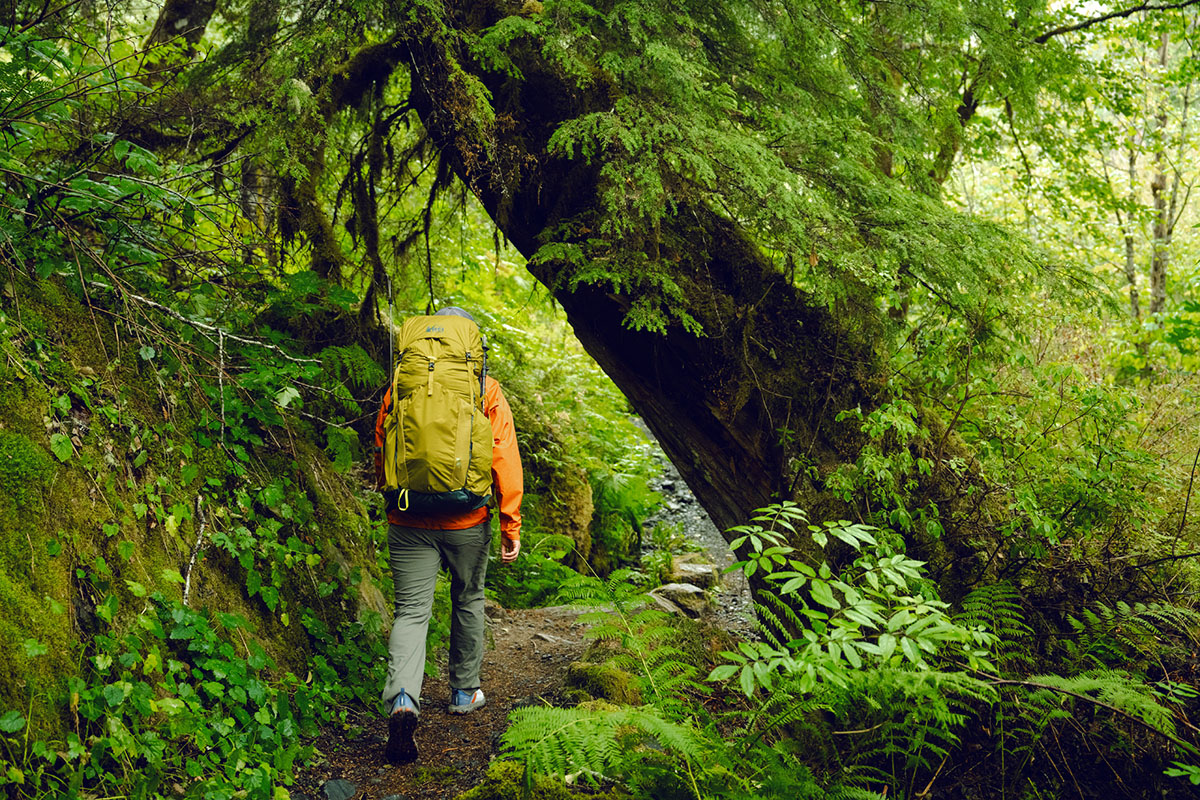
A final pack to have on your radar is REI’s own Trailmade 60, which slots in as the company’s budget offering at $179. Impressively, the Trailmade manages to retain most of the features we look for in a competitive backpacking design, including ample storage (six exterior pockets plus external attachment points), durable materials, an adjustable torso, and an all-in weight of 3 pounds 6 ounces (less than 1 lb. heavier than the Flash). However, the entry-level model comes with its fair share of compromises, including less cushioning (read: less comfort for extended hikes), cheaper nylon on the pack body, and inferior ventilation. And the Trailmade is only offered in two sizes (in both men’s and women’s versions), which makes it a bit harder to dial in fit. All in all, we like the Trailmade for those just starting out, but the Flash is the much more well-rounded option for $20 more.
Editor’s note: We usually provide a live price comparison table below our outdoor gear reviews, but the Flash is sold exclusively by REI Co-op. You can see the Flash 55 page here and support us in the process. Thanks!